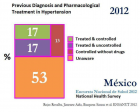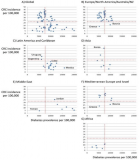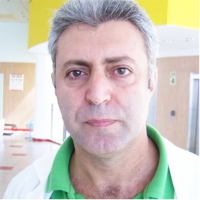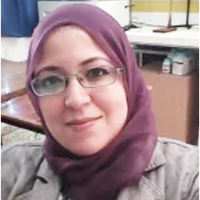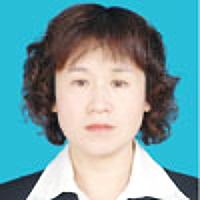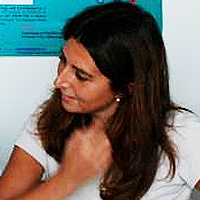Abstract
Research Article
Gentian Violet Modulates Cytokines Levels in Mice Spleen toward an Anti-inflammatory Profile
Salam Jbeili, Mohamad Rima, Abdul Rahman Annous, Abdo Ibrahim Berro, Ziad Fajloun and Marc Karam*
Published: 10 July, 2024 | Volume 8 - Issue 1 | Pages: 001-006
Introduction: Gentian Violet (GV) is a triphenylmethane industrial dye that is known for its antibacterial, antiviral, anti-helminthic, and anti-tumor effects. Although many studies focused on determining the biological and pharmacological applications of GV, its exact effect on the immune response has not been elucidated yet.
Methods: In this study, we investigate the immunomodulatory effects of GV in BALB/c mice after intraperitoneal injection of the dye by assessing cytokines levels in the spleen.
Results: Our data show that GV-treated mice have decreased levels of proinflammatory cytokines (IL-1β and TNF-α) and increased levels of anti-inflammatory cytokines (IL-4) in their spleens. In addition, IFN-γ which can modulate pro-inflammatory cytokine production was upregulated in GV-treated mice.
Conclusion: Together, these findings suggest an anti-inflammatory activity of GV that warrants further studies investigating the potential of GV in immunotherapy.
Read Full Article HTML DOI: 10.29328/journal.aaai.1001034 Cite this Article Read Full Article PDF
Keywords:
Gentian violet; IFN-γ; TNF-α; IL-1β; IL-10; IL-4; IL-13
References
- Zucca P, Cocco G, Sollai F, Sanjust E. Fungal laccases as tools for biodegradation of industrial dyes. Biocatalysis. 2016;1:82-108. Available from: https://www.degruyter.com/document/doi/10.1515/boca-2015-0007/html
- Thetford D. Triphenylmethane and Related Dyes. In: Kirk-Othmer Encyclopedia of Chemical Technology. Hoboken, NJ, USA: John Wiley & Sons, Inc.; 2013.
- Lauth C. On the new aniline dye, Violet de Paris. Laboratory. 1867;1:138-9.
- Maley AM, Arbiser JL. Gentian Violet: a 19th-century drug re‐emerges in the 21st century. Exp Dermatol. 2013;22(12):775–80. Available from: https://onlinelibrary.wiley.com/doi/full/10.1111/exd.12257
- Conn HJ. An Investigation of American Stains: Report of Committee on Bacteriological Technic. J Bacteriol. 1922;7(1):127-48. Available from: https://pubmed.ncbi.nlm.nih.gov/16558944/
- de Souza Pietra RC, Rodrigues LF, Teixeira E, Fried L, Lefkove B, Rabello A, et al. Triphenylmethane derivatives have high in vitro and in vivo activity against the main causative agents of cutaneous leishmaniasis. PLoS One. 2013;8(1):e51864. Available from: https://pubmed.ncbi.nlm.nih.gov/23341885/
- Berrios RL, Arbiser JL. Effectiveness of gentian violet and similar products commonly used to treat pyodermas. Dermatol Clin. 2011;29(1):69-73. Available from: https://pubmed.ncbi.nlm.nih.gov/21095530/
- Aljofan M, Sganga ML, Lo MK, Rootes CL, Porotto M, Meyer AG, et al. Antiviral activity of gliotoxin, gentian violet and brilliant green against Nipah and Hendra virus in vitro. Virol J. 2009 Nov 4;6:187. Available from: https://pubmed.ncbi.nlm.nih.gov/19889218/
- Liu W, Chao Y, Yang X, Bao H, Qian S. Biodecolorization of azo, anthraquinonic and triphenylmethane dyes by white-rot fungi and a laccase-secreting engineered strain. J Ind Microbiol Biotechnol. 2004;31(3):127-32. Available from: https://pubmed.ncbi.nlm.nih.gov/15069603/
- Azmi W, Sani RK, Banerjee UC. Biodegradation of triphenylmethane dyes. Enzyme Microb Technol. 1998; 15;22(3):185-91. Available from: https://pubmed.ncbi.nlm.nih.gov/9463944/
- Au W, Pathak S, Collie CJ, Hsu TC. Cytogenetic toxicity of gentian violet and crystal violet on mammalian cells in vitro. Mutat Res. 1978;58(2-3):269-76. Available from: https://pubmed.ncbi.nlm.nih.gov/745616/
- Gill PK, Arora DS, Chander M. Biodecolourization of azo and triphenylmethane dyes by Dichomitus squalens and Phlebia spp. J Ind Microbiol Biotechnol. 2002;28(4):201-3. Available from: https://pubmed.ncbi.nlm.nih.gov/11986919/
- Littlefield NA, Blackwell BN, Hewitt CC, Gaylor DW. Chronic toxicity and carcinogenicity studies of gentian violet in mice. Fundam Appl Toxicol. 1985;5(5):902-12. Available from: https://pubmed.ncbi.nlm.nih.gov/4065463/
- Jurevic RJ, Traboulsi RS, Mukherjee PK, Salata RA, Ghannoum MA; Oral HIV/AIDS Research Alliance Mycology Focus group. Identification of gentian violet concentration that does not stain oral mucosa, possesses anti-candidal activity and is well tolerated. Eur J Clin Microbiol Infect Dis. 2011;30(5):629-33. Available from: https://pubmed.ncbi.nlm.nih.gov/21210170/
- Vousden KH, Lane DP. p53 in health and disease. Nat Rev Mol Cell Biol. 2007;8(4):275-83. Available from: https://pubmed.ncbi.nlm.nih.gov/17380161/
- Schuler M, Green DR. Transcription, apoptosis and p53: catch-22. Trends Genet. 2005;21(3):182-7. Available from: https://pubmed.ncbi.nlm.nih.gov/15734577/
- Yamaguchi M, Vikulina T, Weitzmann MN. Gentian violet inhibits MDA-MB-231 human breast cancer cell proliferation, and reverses the stimulation of osteoclastogenesis and suppression of osteoblast activity induced by cancer cells. Oncol Rep. 2015;34(4):2156-62. Available from: https://pubmed.ncbi.nlm.nih.gov/26260090/
- Mukawera E, Chartier S, Williams V, Pagano PJ, Lapointe R, Grandvaux N. Redox-modulating agents target NOX2-dependent IKKε oncogenic kinase expression and proliferation in human breast cancer cell lines. Redox Biol. 2015;6:9-18. Available from: https://pubmed.ncbi.nlm.nih.gov/26177467/
- Lawrence T. The nuclear factor NF-kappaB pathway in inflammation. Cold Spring Harb Perspect Biol. 2009;1(6):a001651. Available from: https://pubmed.ncbi.nlm.nih.gov/20457564/
- Zimmermann M. Ethical guidelines for investigations of experimental pain in conscious animals. Pain. 1983 Jun;16(2):109-110. Available from: https://pubmed.ncbi.nlm.nih.gov/6877845/
- Ibrahim KE, Al-Mutary MG, Bakhiet AO, Khan HA. Histopathology of the Liver, Kidney, and Spleen of Mice Exposed to Gold Nanoparticles. Molecules. 2018;23(8):1848. Available from: https://pubmed.ncbi.nlm.nih.gov/30044410/
- Dey P. Tissue Microtomy: Principle and Procedure. In: Basic and Advanced Laboratory Techniques in Histopathology and Cytology. Singapore: Springer Singapore. 2018; 41-50.
- Wluka A, Olszewski WL. Innate and adaptive processes in the spleen. Ann Transplant. 2006;11(4):22-9. PMID: 17715574.
- Lopez-Castejon G, Brough D. Understanding the mechanism of IL-1β secretion. Cytokine Growth Factor Rev. 2011;22(4):189-95. Available from: https://pubmed.ncbi.nlm.nih.gov/22019906/
- Chu WM. Tumor necrosis factor. Cancer Lett. 2013 Jan 28;328(2):222-5. Available from: https://pubmed.ncbi.nlm.nih.gov/23085193/
- Mühl H, Pfeilschifter J. Anti-inflammatory properties of pro-inflammatory interferon-gamma. Int Immunopharmacol. 2003 Sep;3(9):1247-55. Available from: https://pubmed.ncbi.nlm.nih.gov/12890422/
- Zhao X, Li R, Huang J, Li J, Hou M, Zhong J. Association of some physiological factors and milk performance in Chinese Holstein. Asian J Anim Vet Adv. 2012;7(12):1356–63. Available from: https://www.cabidigitallibrary.org/doi/full/10.5555/20133021289
- Fraile L, Crisci E, Córdoba L, Navarro MA, Osada J, Montoya M. Immunomodulatory properties of beta-sitosterol in pig immune responses. Int Immunopharmacol. 2012;13(3):316-21. Available from: https://pubmed.ncbi.nlm.nih.gov/22595193/
- Chauhan RS. Nutrition, immunity, and livestock health. Indian Cow Sci Econ J. 2010;7(24):2-13.
- Zhang JM, An J. Cytokines, inflammation, and pain. Int Anesthesiol Clin. 2007;45(2):27-37. Available from: https://pubmed.ncbi.nlm.nih.gov/17426506/
- Bonner MY, Arbiser JL. Targeting NADPH oxidases for the treatment of cancer and inflammation. Cell Mol Life Sci. 2012;69(14):2435-42. Available from: https://pubmed.ncbi.nlm.nih.gov/22581366/
- Naldini A, Carraro F. Role of inflammatory mediators in angiogenesis. Curr Drug Targets Inflamm Allergy. 2005;4(1):3-8. Available from: https://pubmed.ncbi.nlm.nih.gov/15720228/
- Hong KH, Cho ML, Min SY, Shin YJ, Yoo SA, Choi JJ, et al. Effect of interleukin-4 on vascular endothelial growth factor production in rheumatoid synovial fibroblasts. Clin Exp Immunol. 2007;147(3):573-9. Available from: https://pubmed.ncbi.nlm.nih.gov/17302909/
- Li Z, Chen L, Qin Z. Paradoxical roles of IL-4 in tumor immunity. Cell Mol Immunol. 2009 Dec;6(6):415-22. Available from: https://pubmed.ncbi.nlm.nih.gov/20003817/
- Shurin MR, Lu L, Kalinski P, Stewart-Akers AM, Lotze MT. Th1/Th2 balance in cancer, transplantation and pregnancy. Springer Semin Immunopathol. 1999;21(3):339-59. Available from: https://pubmed.ncbi.nlm.nih.gov/10666777/
- Yoshimoto T. The Hunt for the Source of Primary Interleukin-4: How We Discovered That Natural Killer T Cells and Basophils Determine T Helper Type 2 Cell Differentiation In Vivo. Front Immunol. 2018;9:716. Available from: https://pubmed.ncbi.nlm.nih.gov/29740428/
- Junttila IS. Tuning the Cytokine Responses: An Update on Interleukin (IL)-4 and IL-13 Receptor Complexes. Front Immunol. 2018;9:888. Available from: https://pubmed.ncbi.nlm.nih.gov/29930549/
- Bao K, Reinhardt RL. The differential expression of IL-4 and IL-13 and its impact on type-2 immunity. Cytokine. 2015;75(1):25-37. Available from: https://pubmed.ncbi.nlm.nih.gov/26073683/
- Brinkmann V, Geiger T, Alkan S, Heusser CH. Interferon alpha increases the frequency of interferon gamma-producing human CD4+ T cells. J Exp Med. 1993;178(5):1655-63. Available from: https://pubmed.ncbi.nlm.nih.gov/8228812/
- Peleman R, Wu J, Fargeas C, Delespesse G. Recombinant interleukin 4 suppresses the production of interferon gamma by human mononuclear cells. J Exp Med. 1989;170(5):1751-6. Available from: https://pubmed.ncbi.nlm.nih.gov/2530302/
- Lai KN, Leung JC, Li PK, Lui SF. Cytokine production by peripheral blood mononuclear cells in IgA nephropathy. Clin Exp Immunol. 1991;85(2):240-5. Available from: https://pubmed.ncbi.nlm.nih.gov/1907530/
- Morita Y, Yamamura M, Kawashima M, Aita T, Harada S, Okamoto H, et al. Differential in vitro effects of IL-4, IL-10, and IL-13 on proinflammatory cytokine production and fibroblast proliferation in rheumatoid synovium. Rheumatol Int. 2001;20(2):49-54. Available from: https://pubmed.ncbi.nlm.nih.gov/11269532/
- Choi P, Reiser H. IL-4: role in disease and regulation of production. Clin Exp Immunol. 1998;113(3):317-9. Available from: https://pubmed.ncbi.nlm.nih.gov/9737656/
- Legård GE, Pedersen BK. Muscle as an Endocrine Organ. In: Muscle and Exercise Physiology. Elsevier. 2019; 285-307. Available from: https://www.researchgate.net/publication/330053557_Muscle_as_an_Endocrine_Organ
- Deka H, Siddique MA, Ahmed SJ, Mahanta P, Mahanta P. Evaluation of IL-4 and IL-13 Single Nucleotide Polymorphisms and Their Association With Childhood Asthma and Its Severity: A Hospital-Based Case-Control Study. Cureus. 2024;16(4):e57465. Available from: https://pubmed.ncbi.nlm.nih.gov/38699097/
Figures:
Similar Articles
-
Cytokine Modulatory Effects of Sesamum Indicum Seeds Oil Ameliorate Mice with Experimental Autoimmune EncephalomyelitisMohammad Reza Javan*,Mohammad Reza Zamani,Saeed Aslani,Ghader Dargahi Abbasabad,Masoud Beirami Khalaj,Hamed Serati-Nouri. Cytokine Modulatory Effects of Sesamum Indicum Seeds Oil Ameliorate Mice with Experimental Autoimmune Encephalomyelitis. . 2017 doi: 10.29328/journal.aaai.1001008; 1: 086-093
-
Gentian Violet Modulates Cytokines Levels in Mice Spleen toward an Anti-inflammatory ProfileSalam Jbeili, Mohamad Rima, Abdul Rahman Annous, Abdo Ibrahim Berro, Ziad Fajloun, Marc Karam*. Gentian Violet Modulates Cytokines Levels in Mice Spleen toward an Anti-inflammatory Profile. . 2024 doi: 10.29328/journal.aaai.1001034; 8: 001-006
Recently Viewed
-
Prediction of neonatal and maternal index based on development and population indicators: a global ecological studySedigheh Abdollahpour,Hamid Heidarian Miri,Talat Khadivzadeh*. Prediction of neonatal and maternal index based on development and population indicators: a global ecological study. Clin J Obstet Gynecol. 2021: doi: 10.29328/journal.cjog.1001096; 4: 101-105
-
A Genetic study in assisted reproduction and the risk of congenital anomaliesKaparelioti Chrysoula,Koniari Eleni*,Efthymiou Vasiliki,Loutradis Dimitrios,Chrousos George,Fryssira Eleni. A Genetic study in assisted reproduction and the risk of congenital anomalies. Clin J Obstet Gynecol. 2021: doi: 10.29328/journal.cjog.1001095; 4: 096-100
-
Leiomyosarcoma in pregnancy: Incidental finding during routine caesarean sectionToon Wen Tang*,Phoon Wai Leng Jessie. Leiomyosarcoma in pregnancy: Incidental finding during routine caesarean section. Clin J Obstet Gynecol. 2021: doi: 10.29328/journal.cjog.1001094; 4: 092-095
-
Adult Neurogenesis: A Review of Current Perspectives and Implications for Neuroscience ResearchAlex, Gideon S*,Olanrewaju Oluwaseun Oke,Joy Wilberforce Ekokojde,Tolulope Judah Gbayisomore,Martina C. Anene-Ogbe,Farounbi Glory,Joshua Ayodele Yusuf. Adult Neurogenesis: A Review of Current Perspectives and Implications for Neuroscience Research. J Neurosci Neurol Disord. 2024: doi: 10.29328/journal.jnnd.1001102; 8: 106-114
-
Late discover of a traumatic cardiac injury: Case reportBenlafqih C,Bouhdadi H*,Bakkali A,Rhissassi J,Sayah R,Laaroussi M. Late discover of a traumatic cardiac injury: Case report. J Cardiol Cardiovasc Med. 2019: doi: 10.29328/journal.jccm.1001048; 4: 100-102
Most Viewed
-
Evaluation of Biostimulants Based on Recovered Protein Hydrolysates from Animal By-products as Plant Growth EnhancersH Pérez-Aguilar*, M Lacruz-Asaro, F Arán-Ais. Evaluation of Biostimulants Based on Recovered Protein Hydrolysates from Animal By-products as Plant Growth Enhancers. J Plant Sci Phytopathol. 2023 doi: 10.29328/journal.jpsp.1001104; 7: 042-047
-
Sinonasal Myxoma Extending into the Orbit in a 4-Year Old: A Case PresentationJulian A Purrinos*, Ramzi Younis. Sinonasal Myxoma Extending into the Orbit in a 4-Year Old: A Case Presentation. Arch Case Rep. 2024 doi: 10.29328/journal.acr.1001099; 8: 075-077
-
Feasibility study of magnetic sensing for detecting single-neuron action potentialsDenis Tonini,Kai Wu,Renata Saha,Jian-Ping Wang*. Feasibility study of magnetic sensing for detecting single-neuron action potentials. Ann Biomed Sci Eng. 2022 doi: 10.29328/journal.abse.1001018; 6: 019-029
-
Pediatric Dysgerminoma: Unveiling a Rare Ovarian TumorFaten Limaiem*, Khalil Saffar, Ahmed Halouani. Pediatric Dysgerminoma: Unveiling a Rare Ovarian Tumor. Arch Case Rep. 2024 doi: 10.29328/journal.acr.1001087; 8: 010-013
-
Physical activity can change the physiological and psychological circumstances during COVID-19 pandemic: A narrative reviewKhashayar Maroufi*. Physical activity can change the physiological and psychological circumstances during COVID-19 pandemic: A narrative review. J Sports Med Ther. 2021 doi: 10.29328/journal.jsmt.1001051; 6: 001-007

HSPI: We're glad you're here. Please click "create a new Query" if you are a new visitor to our website and need further information from us.
If you are already a member of our network and need to keep track of any developments regarding a question you have already submitted, click "take me to my Query."











